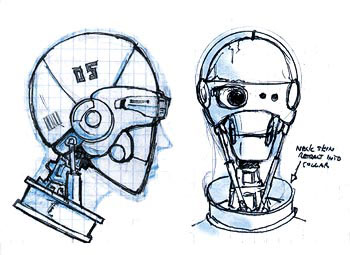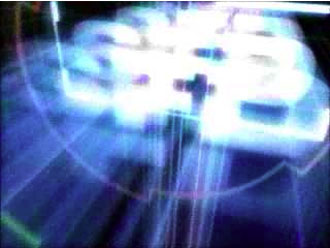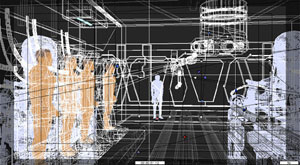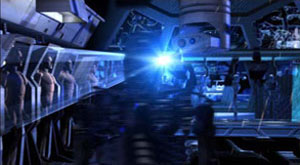
 |
|||||||
|
|
|||||||

| (US) ElectricImage |
| (US) 3DNY.com |
| (US) DV Garage |
| (US) Post Forum |
| (SP) Macuarium |
| (SP) EIU Spain |
| (JP) Studio Momo |
| (JP) Kagiba BBS |
| (US) ElectricImage |
| (US) 3DNY.com |
| (US) DV Garage |
| (US) 3D Buzz |
| (JP) Takashi Inoue |
| (SP) Eterae studio |
| (SP) Triade |
| (US) MForge Presets |
| For Universe Mac/win Kindly provided by Toby Thain at Telegraphics |
| Johnathan Banta interview |
Interview by Robert Jan Kila (interview by e-mail on 01 sept 2004)
Johnathan Banta is lead 3D/compositing artist at Sassoon Film Design in Santa Monica, CA. He is also the owner of Agrapha Productions. He also is the creator of the AG_Shaders package for Electric Image Animation System.
Note that at the end I will place some links to articles on the web about the work of Johnathan, as he has very little time to elaborate on every subject. Therefore I will provide these links, so you can read and esplore for yourselves. If there are any questions about this interview, please contact me.
 My favorite trick, outside of remapping 2D tracking to the 3D curves in the EIAS curve editor, was the glowing spheres inside the skull. Those peices used a hand painted texture map multiplied over an AG_Falloff shader in the luminance channel. Because the detail moves, but the central glow maintains a relationship to the camera, the illusion of internal illumination is maintained. My favorite trick, outside of remapping 2D tracking to the 3D curves in the EIAS curve editor, was the glowing spheres inside the skull. Those peices used a hand painted texture map multiplied over an AG_Falloff shader in the luminance channel. Because the detail moves, but the central glow maintains a relationship to the camera, the illusion of internal illumination is maintained.At the time, version 2.9.2 was incapable of much complex linking, and no expressions were possible, however, clever use of the look-at constrain, and Auto-IK constraints of the time allowed me to automatically compress and extend the pistons supporting the head (a trick I worked out on the T2: Ultimate edition robots). The neck of the robot was actually supposed to be 3 hydraulic pistons, surrounded by a plastic shell, so no vertabrea were there to maintain rigidity of the pose. Care was taken to maintain a constant distance from the shoulders to the head. |
Hi Johnathan. A lot of EIAS users will appreciate the contribution of a great EIAS user, due to your busy work.
Robert: As i look at your homepage the stuff on it is somewhat outdated (till 2001?!)
Johnathan: I see my website right now, as a time capsule of my older work. This is translated as saying that I have been so incredibly busy, that I have no time to work on it. Robert: The most intrigue project is your Friction Robot. I have read the DV article, but for EIAS users it is somewhat short. Johnathan: "Fiction was a music video for the band "Orgy." The article was actually rather thorough. Of interest to the setup for EIAS users, whould be that I projected the original photography |
||||||||
 As for projects, let me make a list: 1. Forces of nature (2004) 2. Spartan (2004) (digital supervisor) 3. Roar: Lions of the Kalahari (2003) (digital supervisor) 4. Sesame Street 4D (2003) (digital supervisor) 5. Haunted Lighthouse (2003) (digital supervisor) ... aka R.L. Stine's Haunted Lighthouse (2003) (USA: complete title) 6. Dark Blue (2002) (digital supervisor) 7. Vanilla Sky (2001) (digital artist) 8. Life as a House (2001) (digital artist) (as Johnathan Banta) 9. 2001 MTV Movie Awards (2001) (TV) (digital supervisor) 10. Back to the Future... The Ride (1991) (digital artist) (2000 clean-up) 11. Ocean Oasis (2000) (digital artist) 12. Way of the Gun, The (2000) (digital artist) (as Jonathan Barta) 13. 2000 MTV Movie Awards (2000) (TV) (digital artist) 14. Siegfried & Roy: The Magic Box (1999) (sequence supervisor/senior animator: Sassoon film design) ... aka Magic Box, The (1999) (USA: short title) 15. "West Wing, The" (1999) TV Series (visual effects) (uncredited) 16. All the current Star Wars DVD menus (find these samples online) 17. All recent T2: DVD menus) 18. Abyss DVD menus 19. ID4 DVD menus 20. The last 2 THX logos for theatres. |
Robert: Then you made some great shaders (i got them all) for EIAS. AG Shaders. They still work great. What was your idea for this, and did you made/ think about more shaders for EIAS?? Johnathan: I had a job come through the door that asked for a blast of smoke to envelope the camera (Trex 3D: Back to the Cretacious). The technique I chose to use used spheres and fractal shaders. EIAS had just published their shader spec, and I had some experience writing shaders for Renderman, so I took up the challenge. In the process I noticed that I could control the shader evolution, by reading the surface color of the geometry beneath. I decided to call the shaders that do this "reactive" shaders, and hence the term was born. I has since become the defacto standard for most shaders written for EI. I am happy that the trick has caught on with other vendors. Robert: What did you do in the last 3 years? Can you give some examples? Did you use EIAS? And still( version 5.5??) What other 3D applications do you use? Johnathan: Generally EIAS is my main package, with Form-Z providing most of my modeling.  |
||||||||
 |
Robert: Are there some tip and tricks you like to share with Electro??? Johnathan: When editing curves in the curve editor, watch the blue and red lines that represent velocity and acceleration. As a rule of thumb, try to adjust your curve so the blue lines have no steep slopes on them at the key frames, but smoothly tie together. This will smooth out the velocity spikes in your animations. That is it for now. Thank you Johnathan Banta, good luck with your projects. |
||||||||
 |
|||||||||
Links:
|
 |
||||||||
| All images belong to their owners and are only used as illustration. Abyss DVD menu Friction clip Terminator DVD menu AG Shaders (TripleDTools) |
